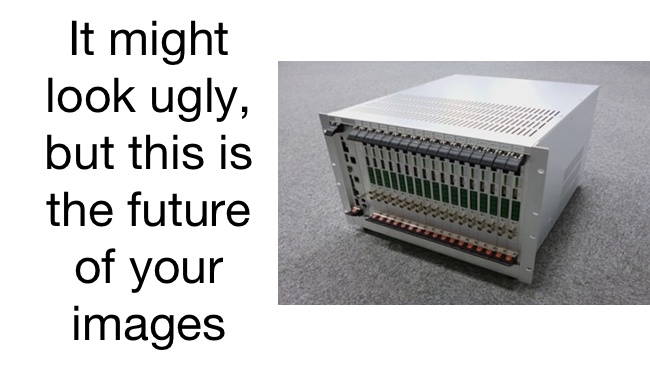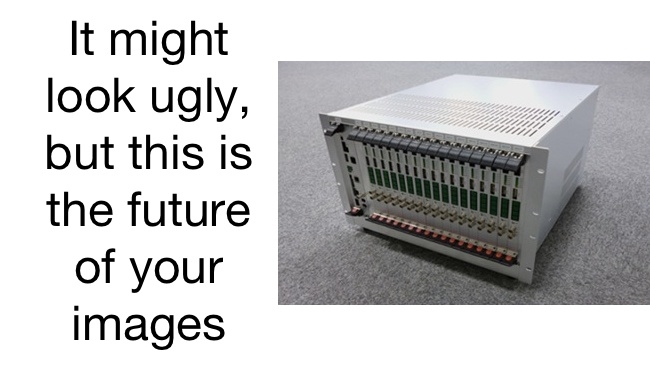

It looks unassuming, but this lump of rack unit kit is part of the future of broadcast. Given that five minutes of uncompressed 8K can take up an entire terabyte of storage, harnessing the power of HEVC to squash it down into something both storable and transmittable is a worthwhile venture. NHK and Mitsubishi have been the first to do it with this 8K encoder.
NHK is, of course, one of the driving forces behind 8K (or Super Hi-Vision as it’s been called for years by both it and the BBC, the other main R&D centre working on the format), so it’s little surprise to see it involved. Mitsubishi Electric is perhaps a bit more of a left-field name, but given the sheer number of companies trading under that umbrella, the Japanese industrial and electronics giant certainly has enough expertise it can lean on in enough different areas to pull most things off if it puts its mind to it.
Parallel processing
The secret of handling 8K is, of course, parallel processing. This is how the BBC and NHK managed to squirt 8K around during its trials at the Olympics, and this encoder is no different. Essentially it divides the image into seventeen 7680 x 256 strips, which share moving object data (speed and direction) at the strip edges to prevent image degradation at the joins when the image is stitched back together.
Currently the team working on the encoder have it operating in realtime at 60Hz. The next developmental push is to ramp that up to 120Hz, which is, of course, one of the other defining aspects of SHV.
Tags: Technology


Comments